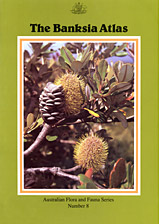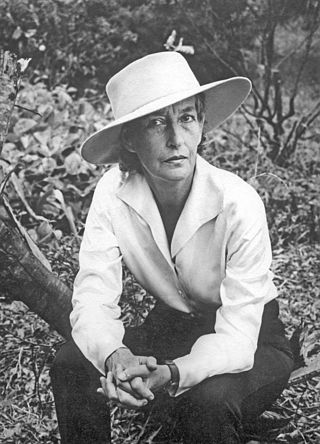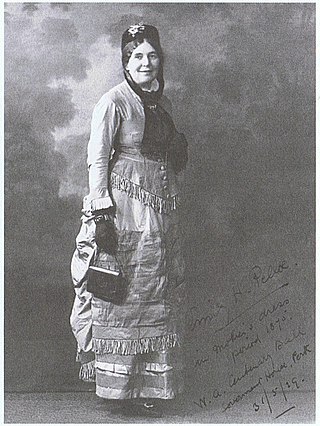Philippa Nikulinsky | |
|---|---|
| Born | 1942 |
| Known for | Botanical illustrator, author |
| Website | nikulinsky |
Philippa Mary Nikulinsky AM (born 1942) is an artist and botanical illustrator based in Western Australia.
Philippa Nikulinsky | |
|---|---|
| Born | 1942 |
| Known for | Botanical illustrator, author |
| Website | nikulinsky |
Philippa Mary Nikulinsky AM (born 1942) is an artist and botanical illustrator based in Western Australia.
Nikulinsky was born in Kalgoorlie in 1942, a remote region in central Western Australia. She began working as an illustrator of natural history in the mid-1970s, specialising in plants from harsh environments. Her illustrations have been included in many books and magazines. She is the author or coauthor of books on plants, animals, and their environment. Other works include the cover art for Landscope, scientific journals, and other publications.
Nikulinsky's career focuses on a lifetime fascination with the flora and fauna of the arid lands of Western Australia. For nearly 50 years Philippa has travelled throughout this enormous state to record, draw and paint its phenomenal natural history. She has shared her gift for watercolour painting through teaching, exhibitions, commissioned works and publications.
Nikulinsky has made contributions to Flora of Australia . She is the author of a work on Banksia menziesii (Firewood Banksia), provided illustrations and text to Life on the Rocks (with Stephen Hopper), and a large format art book called Soul of the Desert. Many of her works include several organisms, illustrating the ecological relationships of the primary subject, and are noted for possessing high levels of detail while still maintaining a sense of spontaneity. As with other botanical illustrators, she works primarily in watercolour.
In 2011 Her Majesty, Queen Elizabeth II and the Duke of Edinburgh visited Perth for the meeting of Commonwealth Heads of Government (CHOGM). During the visit, the Premier of Western Australia presented the Queen with a gift of Philippa's limited edition publication ‘Wildflowers of the Eastern Goldfields of Western Australia’ on behalf of the State government and the people of Western Australia.
Her latest collection of work, Cape Arid includes paintings by her husband Alex Nikulinsky and is held at the world-renowned COMO The Treasury Hotel in Perth. In 2016, Prince Charles opened the hotel and was presented with a work from the series.
On 26 January 2016 Nikulisnky was awarded Member (AM) in the general division of the Order of Australia, "for significant service to the visual arts as a botanical painter and illustrator, to professional associations, and as an author." [1]
From 1995 to 2005 Nikulinsky was commissioned to design and paint Australian plants and animals for use on dinnerware produced by Australian Fine China. These were sold throughout the world.
From 1990 to 2006 Nikulinsky painted the cover illustration of the quarterly magazine ‘Landscope’ for the Western Australian Department of Conservation and Land Management. In 2004 Philippa was commissioned to paint leschenaultia for the May 2004 edition of ‘Curtis’, the magazine produced by the Kew Gardens in the United Kingdom.
Nikulinsky has been praised for her work on Banksia menziesii , describing each stage of the reproductive cycle. The inflorescence of banksias is regarded as one of the most challenging subjects to depict. The brief text is accompanied by a series of extraordinary illustrations, both endpapers showing a seed of the species. [2]

Banksia is a genus of around 170 species of flowering plants in the family Proteaceae. These Australian wildflowers and popular garden plants are easily recognised by their characteristic flower spikes, and woody fruiting "cones" and heads. Banksias range in size from prostrate woody shrubs to trees up to 30 metres (100 ft) tall. They are found in a wide variety of landscapes: sclerophyll forest, (occasionally) rainforest, shrubland, and some more arid landscapes, though not in Australia's deserts.

Sydney Parkinson was a Scottish botanical illustrator and natural history artist. He was the first European artist to visit Australia, New Zealand and Tahiti. Parkinson was the first Quaker to visit New Zealand. The standard author abbreviation Parkinson is used to indicate this person as the author when citing a botanical name.

Margaret Elvire Forrest, Lady Forrest was the wife of Sir John Forrest.

Frederica Lucy "Rica" Erickson, née Sandilands, was an Australian naturalist, botanical artist, historian, author and teacher. Without any formal scientific training, she wrote extensively on botany and birds, as well as genealogy and general history. Erickson authored ten books, co-authored four, was editor of twelve, and author or co-author of numerous papers and articles that have been printed in popular, scientific and encyclopaedic publications.

The Banksia Atlas is an atlas that documents the ranges, habitats and growth forms of various species and other subgeneric taxa of Banksia, an iconic Australian wildflower genus. First published in 1988, it was the result of a three-year nationwide program involving over 400 amateur and professional volunteers.

Banksia menziesii, commonly known as firewood banksia, is a species of flowering plant in the genus Banksia. It is a gnarled tree up to 10 m (33 ft) tall, or a lower spreading 1–3 m (3.3–9.8 ft) shrub in the more northern parts of its range. The serrated leaves are dull green with new growth a paler grey green. The prominent autumn and winter inflorescences are often two-coloured red or pink and yellow, and their colour has given rise to more unusual common names such as port wine banksia and strawberry banksia. Yellow blooms are rarely seen.

Banksia lemanniana, the yellow lantern banksia or Lemann's banksia, is a species of flowering plant in the family Proteaceae, native to Western Australia. It generally grows as an open woody shrub or small tree to 5 m (16 ft) high, with stiff serrated leaves and unusual hanging inflorescences. Flowering occurs over summer, the greenish buds developing into oval flower spikes before turning grey and developing the characteristic large woody follicles. It occurs within and just east of the Fitzgerald River National Park on the southern coast of the state. B. lemanniana is killed by bushfire and regenerates from seed.

Celia Elizabeth Rosser is an Australian botanical illustrator, best known for having published The Banksias, a three-volume series of monographs containing watercolour paintings of every Banksia species.
Stephen Donald Hopper AC FLS FTSE is a Western Australian botanist. He graduated in Biology, specialising in conservation biology and vascular plants. Hopper has written eight books, and has over 200 publications to his name. He was Director of Kings Park in Perth for seven years, and CEO of the Botanic Gardens and Parks Authority for five. He is currently Foundation Professor of Plant Conservation Biology at The University of Western Australia. He was Director of the Royal Botanic Gardens, Kew from 2006 to 2012.

Vera Scarth-Johnson was a noted botanist and botanical illustrator who is also remembered for her continual efforts to teach others to treasure the flora and environment of Australia and, in particular, the botanically rich region of Cooktown and the Endeavour River Valley, on Cape York Peninsula, in far northern Queensland.
Granite outcrops of Western Australia are weathered landforms that occur throughout the state of Western Australia, composed primarily of the rock type granite. All recognised types of this landform can be observed, commonly as bornhardts, but also as inselbergs, castle koppies and nubbins. Rising abruptly from the surrounding landscape they create a variety of microhabitats for plants, and provide seasonal resources and refuge for a range of animals. These areas thus have rich biodiversity and many endemic species. They are significant locations that tie in with the Aboriginal and European cultural heritage of Western Australia.

Botanical illustration is the art of depicting the form, color, and details of plant species. They are generally meant to be scientifically descriptive about subjects depicted and are often found printed alongside a botanical description in books, magazines, and other media. Some are sold as artworks. Often composed by a botanical illustrator in consultation with a scientific author, their creation requires an understanding of plant morphology and access to specimens and references.

Emily Harriet Pelloe was a botanical illustrator, and author of books, of the flowering plants of Western Australia. Her work in watercolour, extensive illustrations, and English language descriptions were included in a number of publications on the flora of the State.

Kunzea pulchella, commonly known as granite kunzea, is a flowering plant in the myrtle family, Myrtaceae and is endemic to the south-west of Western Australia. It is a shrub with spreading branches, egg-shaped to lance-shaped leaves and loose groups of red flowers, each on a short stalk so that the branch is visible between the flowers.
Granitites intangendus is a species of flowering plant endemic to Western Australia. It is found on granite outcrops in semi-arid regions of the midwest and south.
Margaret Pieroni is a Western Australian botanical artist, photographer and botanist who has authored, co-authored or illustrated many books on Australian botany.

Spiculaea is a genus of plants defined by a single species, Spiculaea ciliata, commonly known as elbow orchid, and allied to the family Orchidaceae. Endemic to the south-west of Western Australia, the species is unusual in a number of respects; it grows in shallow soil on granite rock outcrops, grows and flowers in the hottest months of the year and has a unique method of using thynnid wasps as pollinators.
Lakewood is a ghost town in Western Australia, located between Kalgoorlie and Kambalda in the Goldfields-Esperance region of Western Australia.

Acacia lasiocalyx, commonly known as silver wattle or shaggy wattle, is a tree or shrub belonging to the genus Acacia and the subgenus Juliflorae.